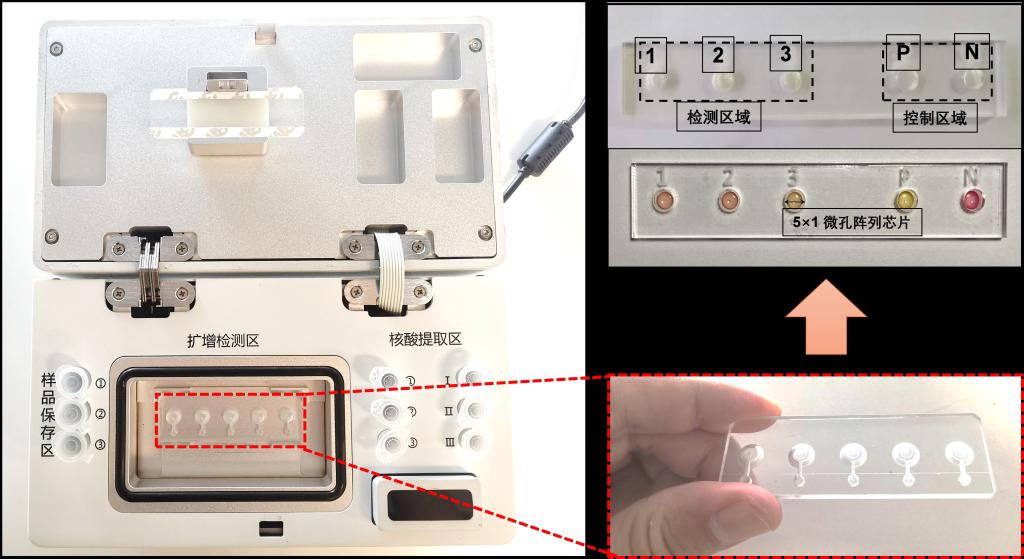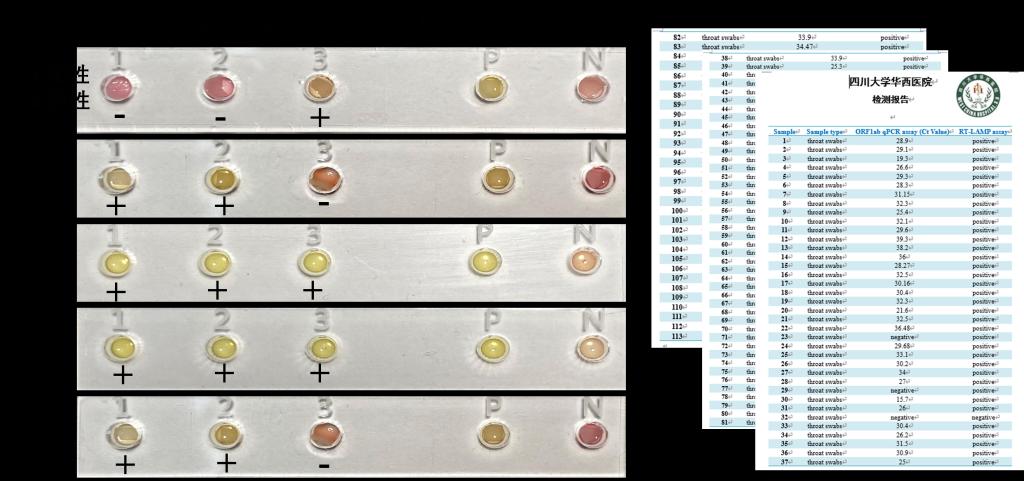Recently, a rapid nucleic acid detection system with high sensitivity and high throughput was jointly developed by Beihang University and West China Hospital of Sichuan University. The system consists of a portable detection device and isothermal amplification-based micropore array chips.

The portable detection device and its function module
At the early stage of the COVID-19 outbreak, the research group led by Professor Fan Yubo, Professor Chang Lingqian and Associate Research Fellow Wang Yang from Beihang and Professor Li Weimin, Professor Ying Binwu, and Research Fellow Geng Jia from West China Hospital of Sichuan University, developed a micropore array chip for high-throughput COVID-19 nucleic acid detection. Adopting the loop-mediated isothermal amplification approach, each chip can detect 3-64 throat swabs for COVID-19 testing, or 1-16 types of bacteria or parasites, including tubercle bacilli and malaria parasite. As for the COVID-19 testing, the system can simultaneously detect three target genes, namely, ORF, N gene, and E gene.

The micropore array chip for COVID-19 nucleic acid detection
The cost of the chip, which utilizes laser plastic welding technique, and its corresponding detection kit is 10 yuan per person in total. Until now, the system has conductednucleic acid testing on 113 samples (87 positive and 26 negative), with a sensitivity of over 95% and a specificity of over 92%.

The detection result of clinical samples from West China Hospital
Embedded in commercial PCR nucleic acid detection devices (0.1-1 million yuan per device, ~1 hour), the system creates a portable, open isothermal nucleic acid amplification-based detection platform. It has competitive advantageous of low cost (10,000 yuan/device), high throughput, high sensitivity and great rapidity (25 minutes). Therefore, the system is especially suitable for rapid detection in rural areas and public places where people often gather.
Up to now, functional testing and primary testing have been performed on prototypes, which are available for registration testing and clinical trail in the next stage. The research group is gearing up for the registration of the system.
Edited by Jia Aiping
Reported by Guo Meng
Reviewed by Han Huiyu
Translated by Xiong Ting

